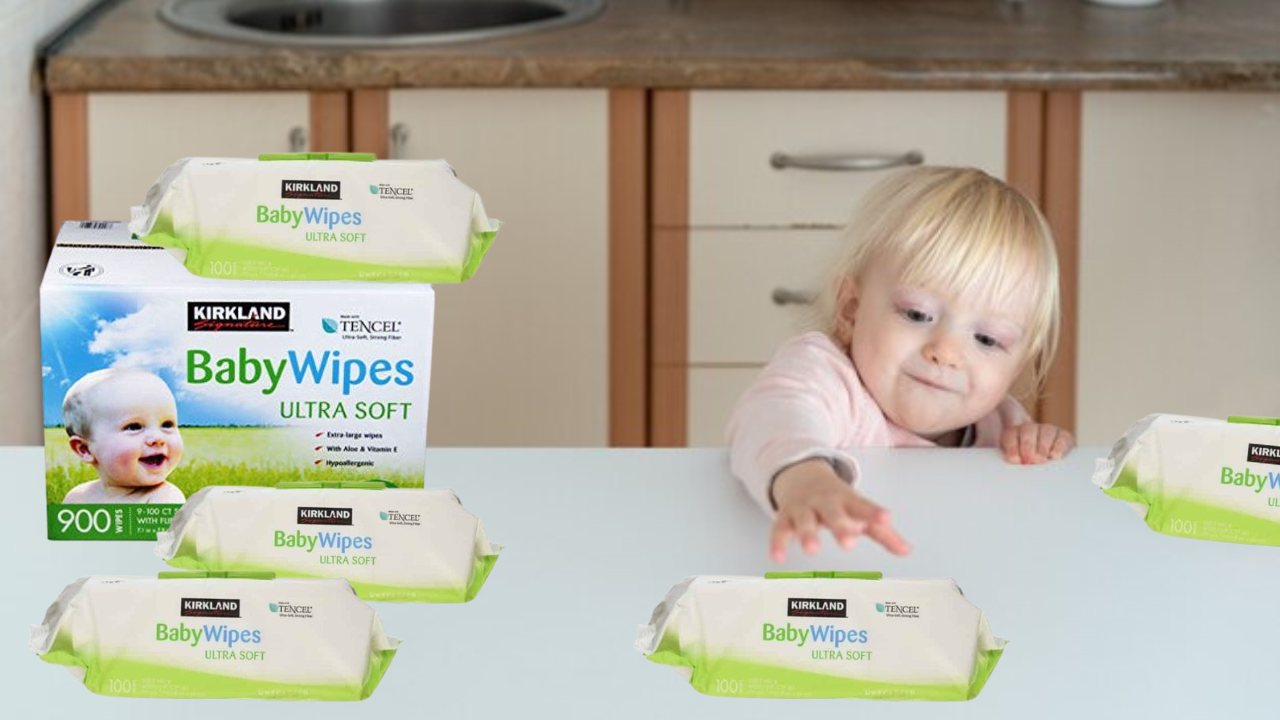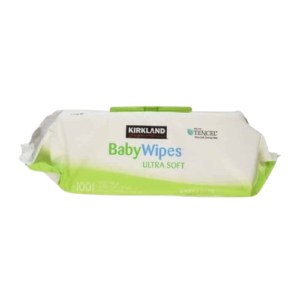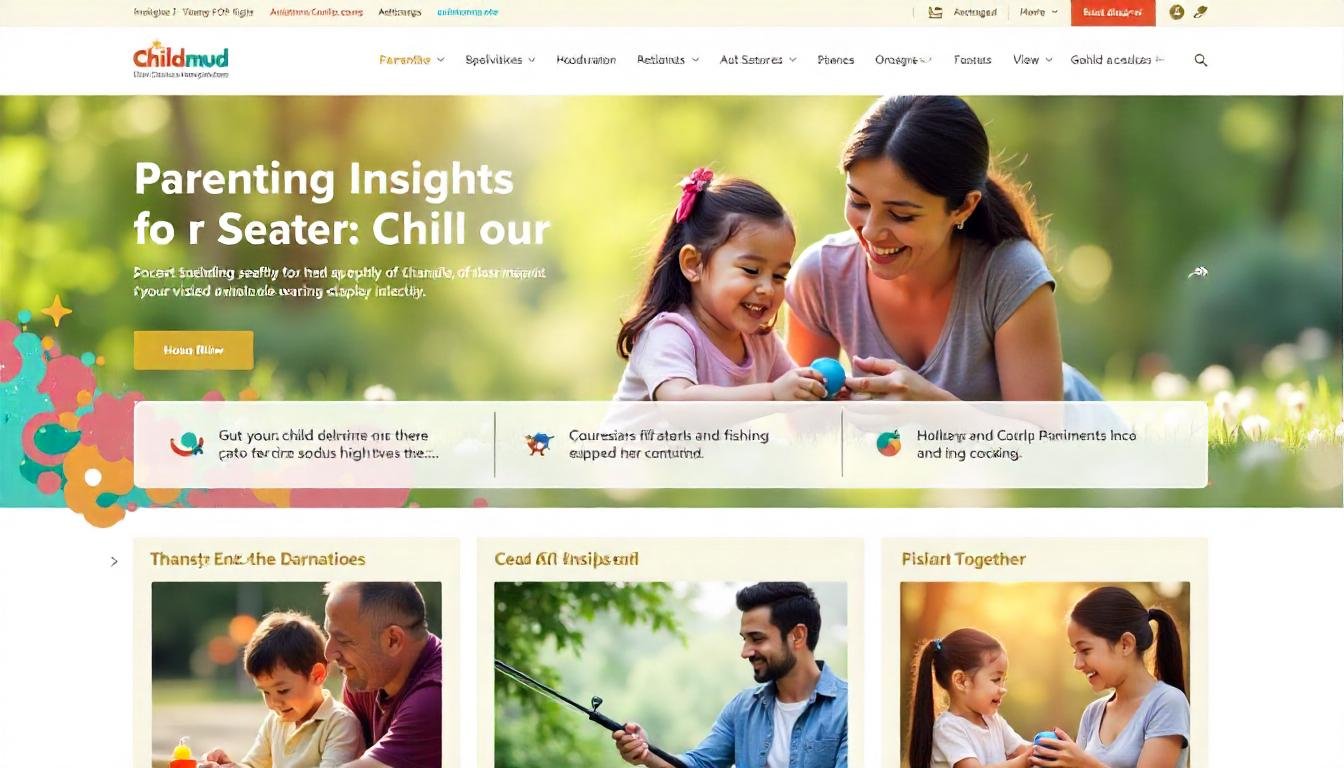LIFE STYLE
Costco kirkland Baby Wipes PFAS

Costco’s Kirkland Signature Baby Wipes are popular among parents for their quality and gentle formula designed for delicate baby skin. However, concerns have surfaced regarding the potential presence of harmful chemicals known as PFAS in these baby wipes. PFAS (per- and polyfluoroalkyl substances) are a group of man-made chemicals that have been linked to environmental and health issues. This article will explore what PFAS are, why their presence in baby wipes is a concern, and what you need to know about Costco Kirkland Baby Wipes with PFAS.
What Are PFAS?
PFAS are a group of synthetic chemicals used in a wide range of consumer products due to their water-resistant and non-stick properties. These chemicals have been used in everything from non-stick cookware to water-repellent clothing, food packaging, and even firefighting foam. The issue with PFAS is their persistence in the environment and the human body. They are sometimes referred to as “forever chemicals” because they do not break down easily and can accumulate over time.
Some studies have linked prolonged exposure to PFAS with health problems such as cancer, immune system damage, liver and kidney issues, and developmental delays in children. While the exact risks of exposure from consumer products like baby wipes are still being studied, there is growing concern about the potential for PFAS contamination in everyday items.
The Concern with Baby Wipes
When it comes to baby products, including wipes, parents are especially cautious about the ingredients. Baby wipes come into contact with sensitive skin multiple times a day, so any harmful chemicals present could have adverse effects over time. The potential presence of PFAS in baby wipes raises questions about safety, as babies have more permeable skin compared to adults, which could increase their susceptibility to absorbing harmful chemicals.
Are PFAS Found in Kirkland Baby Wipes?

To date, there have been no official recalls or definitive reports confirming the presence of PFAS in Costco Kirkland Baby Wipes. However, the concern arises from broader studies that have found PFAS in various personal care products, particularly those marketed as “moisture-resistant” or “long-lasting.” The manufacturing process, where PFAS may inadvertently be introduced, is another potential source of contamination.
Several independent studies and advocacy groups have raised alarms about the presence of PFAS in baby wipes from various brands, prompting consumers to question the safety of their baby products. These reports have fueled interest in testing popular brands, including Costco’s Kirkland Signature, for PFAS contamination.
What Costco Says
As of now, Costco has not issued any official statement confirming the presence of PFAS in its baby wipes. The Kirkland Signature brand is known for its rigorous quality control, and Costco has built a reputation for selling products that meet high safety standards. However, until further independent testing or company disclosures are made, the question of whether PFAS are present in Kirkland baby wipes remains speculative.
For concerned parents, Costco offers a 100% satisfaction guarantee on its Kirkland Signature products, meaning customers can return the wipes if they have concerns about their safety or performance.
How to Minimize PFAS Exposure in Baby Products
If you’re concerned about PFAS exposure from baby wipes or other baby products, here are a few steps you can take:
- Research Your Products: Before purchasing baby wipes, check if the brand has been independently tested for PFAS or other harmful chemicals. Look for certifications like “PFAS-free” or brands that are transparent about their ingredients.
- Use Organic or Eco-Friendly Wipes: Consider switching to wipes that are labeled as organic, biodegradable, or eco-friendly. As these tend to use fewer synthetic chemicals during production.
- Limit Wipe Usage: While baby wipes are convenient, using them less frequently and relying more on warm water. A soft cloth can reduce the risk of exposure to any potential contaminants.
- Dispose of Wipes Properly: Regardless of PFAS concerns, baby wipes should not be flushed down the toilet, as they contribute to environmental pollution. Disposing of them properly helps minimize broader environmental harm.
Conclusion
While Costco Kirkland Baby Wipes are a trusted brand for many, the potential concern over PFAS. In personal care products have led to questions about their safety. As of now, there is no confirmed evidence that PFAS are present in Kirkland Baby Wipes. However, consumers are encouraged to stay informed and make decisions based on the latest available research.
Choosing safe and eco-friendly baby products is always a priority for parents, and as more research emerges on PFAS and other chemicals, it’s important to be vigilant and proactive about what products are used for your baby’s health and well-being.
Frequently Asked Questions
Here are some Frequently Asked Questions (FAQs) about Costco Kirkland Baby Wipes and the concerns surrounding PFAS:
1. What are PFAS?
PFAS (Per- and poly-fluoroalkyl substances) are a group of synthetic chemicals used. In various consumer products for their water- and grease-resistant properties. They are known as “forever chemicals” because they don’t break down easily. It can accumulate in the environment and the human body.
2. Why is there concern about PFAS in baby wipes?
Baby wipes come into direct contact with delicate skin, and there is concern that they contain PFAS. These chemicals could be absorbed, especially by babies who are more vulnerable to chemical exposure. PFAS has been linked to several health issues. Including developmental delays in children, liver problems, and even cancer with prolonged exposure.
3. Are PFAS found in Costco Kirkland Baby Wipes?
There is no confirmed evidence or official statement from Costco that PFAS are present in their Kirkland Baby Wipes. However, growing concerns about PFAS in personal care products have led consumers to question it. These chemicals might be present in various brands, including Kirkland.
4. Has Costco recalled Kirkland Baby Wipes due to PFAS concerns?
No, Costco has not recalled its Kirkland Baby Wipes due to PFAS concerns. The company is known for its high safety standards, and there has been no official communication from them regarding PFAS contamination in their wipes.
5. How can I minimize PFAS exposure for my baby?
To minimize PFAS exposure:
- Research and choose baby wipes from brands that are transparent about their ingredients or have been tested for PFAS.
- Consider using organic or eco-friendly wipes, which tend to use fewer synthetic chemicals.
- Use baby wipes less frequently and rely on warm water and a soft cloth when possible.
LIFE STYLE
Childmud.net Educate Families Through Knowledge and Activities

In today’s fast-paced world, parents often seek reliable resources to navigate the complexities of raising children. Childmud.net emerges as a comprehensive platform dedicated to providing practical parenting advice, insights into child development, and a plethora of family activities designed to foster growth and bonding. This article delves into the features, content, and benefits of Childmud.net, highlighting its role in supporting families on their parenting journey.
An Overview of Childmud.net
Childmud.net is an online resource center focused on delivering high-quality content related to parenting, child development, and family activities. The platform aims to make parenting more manageable and enjoyable by offering practical advice and engaging ideas that cater to various aspects of family life.
Key Features of Childmud.net
Childmud.net is a comprehensive platform designed to support parents and caregivers by offering valuable resources on parenting, child development, and family activities. Here are the standout features that make it an essential resource for families:
1. Expert Parenting Tips
Childmud.net provides practical advice to help parents navigate the challenges of raising children. Topics include discipline strategies, fostering positive behaviors, and ensuring children’s overall well-being.
2. Insights into Child Development
The platform offers in-depth articles on physical, emotional, and cognitive milestones, helping parents understand and support their child’s growth at every stage.
3. Engaging Family Activities
Childmud.net inspires families with creative and fun activity ideas, including indoor games, outdoor adventures, and seasonal crafts, to strengthen family bonds and encourage creativity.
4. Well-Researched Content
All articles are written or reviewed by parenting experts and individuals with firsthand experience, ensuring reliability, accuracy, and practicality.
5. Community Engagement
The platform fosters a sense of community by encouraging readers to share their stories, comment on articles, and participate in discussions, creating a supportive network for parents.
6. Free and Accessible Resources
Childmud.net is entirely free, providing easy access to all articles, tips, and activities without any subscription or payment requirements.
7. User-Friendly Interface
The website is designed for easy navigation, allowing users to quickly find resources and articles relevant to their specific needs.
8. Newsletter Updates
Parents can subscribe to the platform’s newsletter to receive regular updates on the latest articles, tips, and family activities.
9. Social Media Integration
Childmud.net engages its audience through active social media channels, sharing content, hosting discussions, and providing additional parenting resources.
10. Customizable Advice for Diverse Families
Recognizing that every family is unique, Childmud.net addresses diverse parenting styles and family structures, offering tips that cater to various needs and preferences.
By combining practical advice, expert insights, and engaging activities, Childmud.net has established itself as a trusted companion for families navigating the joys and challenges of parenting.
Exploring the Content Categories
Childmud.net organizes its content into several categories, each focusing on specific aspects of parenting and family life.
1. Parenting Tips
This section offers practical advice on various parenting topics, including:
- Discipline Strategies: Effective methods to guide children’s behavior positively.
- Health and Nutrition: Tips on maintaining a balanced diet and healthy lifestyle for children.
- Education and Learning: Strategies to support academic growth and instill a love for learning.
2. Child Development
Understanding child development is crucial for effective parenting. This category provides insights into:
- Developmental Milestones: Information on what to expect at different ages and stages.
- Emotional Growth: Guidance on nurturing emotional intelligence and resilience.
- Social Skills: Tips on helping children develop healthy relationships and social interactions.
3. Family Activities
Engaging in activities as a family strengthens bonds and creates cherished memories. Childmud.net offers ideas for:
- Indoor Games: Creative activities to enjoy at home, fostering creativity and teamwork.
- Outdoor Adventures: Suggestions for family outings that promote physical activity and exploration.
- Seasonal Crafts: DIY projects that celebrate holidays and seasons, encouraging artistic expression.
The Vision and Mission of Childmud.net
Childmud.net is committed to empowering families by providing accessible and practical information. The platform’s mission is to support parents in raising well-rounded children by offering resources that address the multifaceted aspects of parenting and child development.
Commitment to Quality Content
The platform ensures that all articles are well-researched and written by individuals with firsthand experience in parenting and child development. This dedication to quality makes Childmud.net a trusted resource for families seeking guidance and inspiration.
Engaging with the Childmud.net Community
Childmud.net fosters a sense of community among its readers by encouraging interaction and sharing of experiences. Parents can connect through comments, participate in discussions, and contribute their own insights, creating a supportive network of individuals navigating similar journeys.
How to Get Involved
- Subscribe to the Newsletter: Stay updated with the latest articles and resources by subscribing to the platform’s newsletter.
- Share Your Story: Contribute personal experiences or tips to enrich the community’s collective knowledge.
- Engage on Social Media: Follow Childmud.net on social media platforms to join discussions and access additional content.
Conclusion
Childmud.net serves as a valuable resource for parents and caregivers seeking guidance, support, and inspiration. By offering practical advice, insightful articles, and engaging activities, the platform empowers families to navigate the complexities of parenting with confidence and joy. Whether you’re looking for tips on child development, creative family activities, or expert parenting advice, Childmud.net provides a comprehensive and trustworthy source to support your family’s journey.
FAQs
What is Childmud.net?
Childmud.net is an online platform offering resources on parenting, child development, and family activities to support and empower families.
Who writes the content on Childmud.net?
The articles are written by experienced parents and experts in child development, ensuring reliable and practical information.
Is there a cost to access Childmud.net?
No, Childmud.net provides free access to all its articles and resources.
Can I contribute to ChildmudNet?
Yes, the platform encourages readers to share their experiences and insights to enrich the community.
How can I stay updated with new content?
You can subscribe to the newsletter or follow ChildmudNet on social media to receive updates on the latest articles and resources.
Is ChildmudNet suitable for new parents?
Absolutely, the platform offers a wealth of information and tips that are beneficial for new and experienced parents alike.
BLOGS
Poem about The 5 stages of Grief by Linda Pastan
HOME IMPROVEMENET
Fun Fact About Long Term Care That Will Fascinate You

Long-term care is often seen as a serious and heavy topic, but it’s also full of intriguing Fun Fact about long term care that can surprise and even delight those who take the time to explore it. With advancements in care facilities, evolving trends in aging, and personal choices impacting how people spend their later years, there’s always something fascinating to learn.
This article uncovers a fun fact about long-term care and dives into other insights to give you a broader perspective on this essential yet often overlooked subject.
Understanding Long Term Care
Long-term care refers to a range of services designed to meet an individual’s health and personal care needs over an extended period. These services cater to individuals who require assistance with daily living activities such as bathing, dressing, eating, and managing medication. Surprisingly, long-term care isn’t just for the elderly—people of all ages may need it due to chronic illnesses, disabilities, or other medical conditions.
Fun Fact About Long Term Care
Did you know that more than 70% of individuals over the age of 65 will require some form of long-term care during their lifetime? This statistic highlights the importance of preparing for such care well in advance.
1۔ Long Term Care Isn’t Just for Seniors
When people think of long-term care, the image of elderly individuals often comes to mind. While it’s true that aging is a primary driver of the need for long-term care, it’s not exclusive to seniors. Surprising to many, a significant percentage of people under the age of 65 also rely on long-term care services.
Why Younger People May Need Long-Term Care
Life is unpredictable, and various conditions can lead to a younger individual requiring long-term assistance. These situations often include:
- Traumatic Injuries: Car accidents, sports-related injuries, or workplace incidents can cause permanent or temporary disabilities requiring extensive care.
- Chronic Illnesses: Conditions such as multiple sclerosis, cancer, or early-onset Parkinson’s disease often necessitate ongoing support.
- Congenital Disabilities: People born with conditions like cerebral palsy or Down syndrome may need long-term care throughout their lives.
These cases demonstrate that the need for long-term care transcends age and can touch anyone unexpectedly.
Statistics Highlighting the Need Among Younger Populations
Studies reveal that approximately 40% of individuals receiving long-term care are under the age of 65. This number underscores the importance of recognizing that long-term care isn’t solely about aging but about ensuring quality of life for people with diverse needs.
The Emotional and Financial Impact on Families
When a younger family member requires long-term care, it often places unique pressures on families. Parents, siblings, or spouses may find themselves in caregiving roles, which can be emotionally challenging and financially demanding. This is especially true when the need arises unexpectedly, leaving little time for planning.
Adapting Long-Term Care for a Younger Demographic
Care options for younger individuals often differ from traditional senior care facilities. For example:
- Rehabilitation Centers focus on recovery for injuries or illnesses.
- Community-Based Programs provide peer interaction and age-appropriate activities.
- Technology-Enhanced Care uses tools like gaming systems for therapy or education-focused programming to keep younger individuals engaged.
These alternatives ensure that care aligns with the unique lifestyles and needs of younger people, offering independence and dignity while receiving support.
2۔ Home Care Is the Preferred Option
One fun fact about long term care is that most people receiving it aren’t in nursing homes or assisted living facilities—they’re in their own homes. Studies reveal that 80% of long-term care is delivered at home, often by family members. This trend reflects the growing desire to age in place and the rise of home health care solutions.
3۔ Pet Therapy is Addition to Long-Term Care
Long-term care facilities have come a long way from being mere places of assistance; they are now centers that prioritize holistic well-being. One of the most heartwarming innovations making waves in these settings is pet therapy. Far from being just a trend, pet therapy has proven to be a game-changer, offering emotional, mental, and even physical benefits to residents.
What Is Pet Therapy?
Pet therapy involves the use of trained animals to provide comfort and companionship to individuals in various care settings. While dogs and cats are the most common therapy animals, birds, rabbits, and even miniature horses have found their way into long-term care facilities. These animals visit regularly or may even be permanent residents of the facility, offering joy and companionship to those in need.
The Science Behind the Comfort
The magic of pet therapy isn’t just anecdotal; it’s backed by science. Studies have shown that interacting with animals can:
- Reduce Stress: Stroking a pet releases oxytocin, the “feel-good” hormone, which helps combat stress and anxiety.
- Lower Blood Pressure: Spending time with animals can reduce hypertension, improving cardiovascular health.
- Boost Mood: Animals have an uncanny ability to lift spirits, making them effective in combating depression and loneliness.
How Pet Therapy Enhances Long-Term Care
For residents in long-term care facilities, pet therapy offers a unique type of comfort. Here’s how:
- Combating Loneliness: Many residents feel isolated due to limited family visits or the loss of loved ones. Therapy animals provide companionship and unconditional love.
- Encouraging Physical Activity: Therapy animals often inspire light activities such as walking a dog or playing with a cat, which can aid in mobility and strength.
- Stimulating Social Interaction: Pets act as conversation starters, fostering connections among residents, staff, and visitors.
- Improving Mental Health: For individuals with dementia or Alzheimer’s, pets can trigger positive memories and reduce agitation.
Real-Life Success Stories
A shining example of pet therapy’s impact comes from long-term care homes that adopt resident cats or dogs. In one facility, a Labrador named Max transformed the atmosphere, helping residents feel more at home. Max’s presence encouraged a sense of community, with residents taking turns feeding and walking him.
Similarly, bird aviaries in memory care units have provided endless hours of entertainment and relaxation for residents, offering a connection to nature even indoors.
The Role of Professional Animal Handlers
While the benefits of pet therapy are vast, it’s essential that therapy animals are carefully selected and trained. Professional handlers ensure that animals are calm, gentle, and responsive to the needs of residents, particularly those with physical or cognitive challenges.
Expanding Access to Pet Therapy
Recognizing the transformative effects of pet therapy, many long-term care facilities now partner with organizations that provide trained therapy animals. Some facilities are even implementing permanent animal-friendly policies, allowing residents to bring their own pets when feasible.
A Simple Joy with Big Results
The beauty of pet therapy lies in its simplicity: a wagging tail or a soft purr can make all the difference in someone’s day. It’s a testament to the profound connection between humans and animals, showcasing how care doesn’t always need to be clinical.
4۔ Women Are the Backbone of Long Term Care
When it comes to providing care, women play a dominant role. Not only are the majority of professional caregivers women, but around 75% of unpaid caregivers, such as daughters or wives, are also women. This underscores the critical role women play in supporting aging or disabled loved ones.
5۔ Innovative Technology is Changing the Game
Technology is revolutionizing long-term care with tools like wearable health monitors, telemedicine, and AI-powered caregiving robots. These advancements are making it easier to deliver personalized care and monitor health remotely, offering more flexibility and independence for individuals receiving care.
6۔ The Unexpected Cost of Long Term Care
One lesser-known fun fact about long term care is the astronomical cost. The average monthly expense of staying in a nursing home can exceed $7,000. Interestingly, most people underestimate the financial aspect of long-term care, leading to insufficient planning. However, long-term care insurance and government programs like Medicaid can help alleviate this burden.
7۔ Social Connection Is Key
Residents in long-term care facilities often report improved emotional well-being due to structured social activities. Programs like music therapy, art workshops, and gardening clubs provide residents with opportunities to engage and connect, fostering a sense of belonging and joy.
Conclusion
Long-term care is a fascinating topic that intertwines practical necessity with heartwarming stories and innovations. From the surprising prevalence of in-home care to the uplifting role of therapy pets, it offers insights that defy traditional expectations. As technology evolves and the need for personalized care grows, the importance of understanding and planning for long-term care becomes ever more crucial.
FAQs
What is the main purpose of long-term care?
Long-term care helps individuals maintain their quality of life by providing assistance with daily activities and medical needs over an extended period.
Can younger people need long-term care?
Yes, about 40% of long-term care recipients are under the age of 65, often due to injuries or chronic illnesses.
Is long-term care only for nursing homes?
No, a significant portion of long-term care occurs at home, often provided by family members or professional caregivers.
How do therapy pets contribute to long-term care?
Therapy pets improve emotional well-being, reduce stress, and combat loneliness in residents, making them an integral part of many care programs.
What role does technology play in long-term care?
Technology aids in personalized care delivery, remote health monitoring, and enhancing the overall independence of care recipients.
Why is financial planning essential for long-term care?
Given the high costs, proper financial planning ensures that individuals can afford the care they need without undue financial strain.
-

 Technology3 months ago
Technology3 months agointernet chicks: A Digital Phenomenon
-

 Recipes4 months ago
Recipes4 months agoSmoothie CCL: A Delicious and Nutritious Trend
-

 FOOD4 months ago
FOOD4 months agoNasi Uduk
-

 Recipes4 months ago
Recipes4 months agoThe Ultimate Bug Juice Camp Drink Recipe for Fun and Flavor
-

 Recipes4 months ago
Recipes4 months agoCrab Brulee Recipe: A Gourmet Delight
-

 BLOGS4 months ago
BLOGS4 months agoUnveiling the Innovation: BoltBól – Revolutionizing Accessibility and Mobility
-

 FOOD4 months ago
FOOD4 months agoCornflake Meringue Cookies
-

 FOOD4 months ago
FOOD4 months agoÇeciir: A Journey Through Turkish Cuisine

